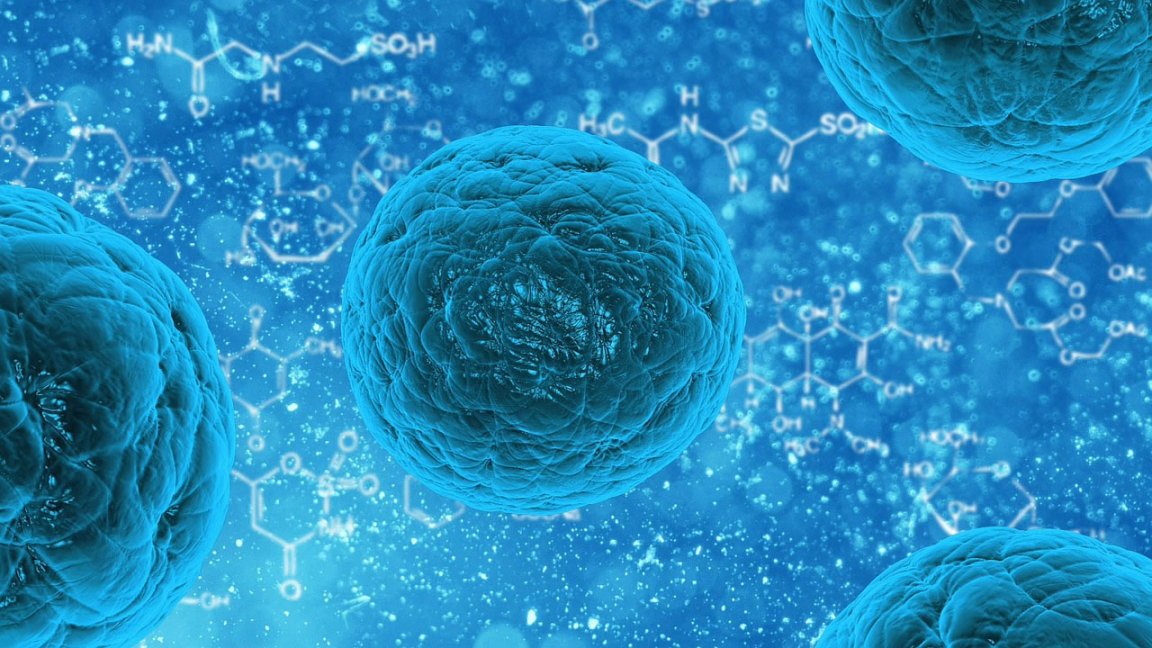
Ready to see what a “little squeeze” can do? It seems that it may be able to convert adult cells into stem cells.
The type of stem cells that are of particular medical interest are referred to as induced pluripotent stem cells or iPSCs. The iPSCs are ideal because they are derived from mature, adult cells that have been genetically reprogrammed (or induced) to behave like stem cells. They can then be regrown into anything from liver to lung cells (and more).
And who knew that they could be so adorable? Note: Despite what the video shows, actual stem cells don’t have asymmetrical eyeballs, sweatbands, or teeth.

Squeezing Cells With Gel
Okay, so the video might take some creative license. In fact, the process doesn’t involve a giant press and audible “squishing” noises while the stem cells yell “ouch!” So let’s break this down a bit more…
Scientists at the lab of Matthias Lutolf at the École Polytechnique Fédérale De Lausanne (EPFL) have developed a gel that boosts our ability to reprogram adult cells into stem cells by “squeezing” them into shape with a 3D gel. The gel contains normal growth nutrients, and only cells expressing reprogramming factors were used in the studies.
Instead of using the two-dimensional world of a petri dish to grow cells, the scientists at EPFL tried to “simulate the three-dimensional environment of a living tissue and see how it would influence stem cell behavior,” explains Lutolf. “But soon we were surprised to see that cell reprogramming is also influenced by the surrounding microenvironment,” AKA, the gel.
The researchers discovered that, by adjusting the density of the gel surrounding the cells, thus, exerting force on or “squeezing” them, they could reprogram the cells faster and more efficiently compared to current methods.
“Each cell type may have a ‘sweet spot’ of physical and chemical factors that offer the most efficient transformation,” says Lutolf. “Once you find it, it is a matter of resources and time to create stem cells on a larger scale.”

The Importance of a 3D Environment
This whole process isn’t completely understood yet. But, scientists believe that the three-dimensional environment is the key to generating mechanical signals that work together with genetic factors to make the cell easier to transform into a stem cell.
With this new “squeezing” technique, stem cell production can easily be scaled up to produce stem cells fit for various applications on an industrial scale. While Lutolf’s lab is looking into this, their main focus is to better understand the phenomenon, and to find the “sweet spots” for other cell types.